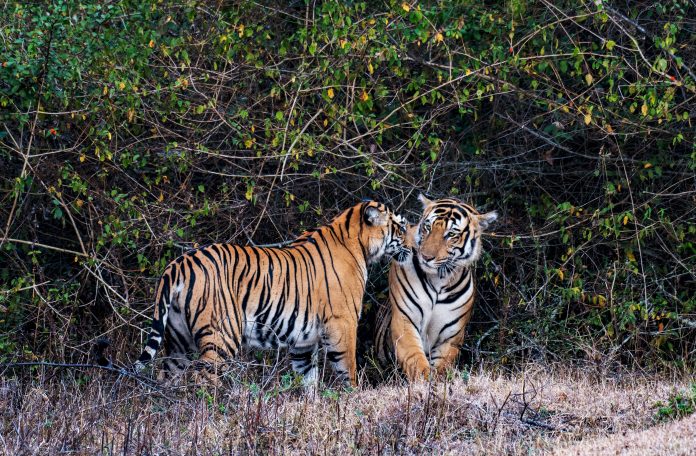By Journey Man
Reckoned to be one of the best national parks in not only Karnataka but in India, Bandipur is a gem of a wildlife reserve that a country can treasure. Located amid the picturesque surroundings of the Western Ghats, this national park covers an area of about 874.2 sq km. Together with the Mudumalai Wildlife Sanctuary in Tamil Nadu, the Wayanad Wildlife Sanctuary in Kerala and the Nagarhole National Park in Karnataka, it creates an essential part of the ‘Nilgiri Biosphere Reserve’.
The national park is a home to a sizable number of tigers, elephants, gaur (an Indian bull), sambhar, chital, mouse deer, four-horned antelope, wild dogs, wild boar, jackal, sloth bear, panther, Malabar squirrel, porcupines and the black-knapped hare. The park is also an ideal site for bird watching.
What makes Bandipur even more popular is its strategic location. The national park is situated to some of the most scenic destinations and historically significant places in south India, thus it is very likely for those visiting Bandipur to plan a trip to one or more of these places situated in the close proximity.
This national park was formed by including most of the forest areas of the then Venugopala Wildlife Park established under government notification of February 19, 1941 and the area was enlarged in 1985, extending over an area of 874.20 sq.km and named as Bandipur National Park.
Included in Project Tiger
This reserve was brought under Project Tiger in 1973. Subsequently some adjacent reserve forest areas were added to the reserve and extended to 880.02 Sq. Km. The present area under the control of Bandipur Tiger Reserve is 912.04 Sq. Km.
An area of 39.80 Sq. Km of KFDC plantation area was handed over to this division during 2007-08. During 2010-11 the Nugu Wildlife Sanctuary was handed over to the Wildlife Division, Mysore.


Located in Karnataka, Bandipur National Park is famous for its rich biodiversity and provides one of the best tiger safari experiences in India after the Ranthambore National Park. The area covered by the park is 874 square km, which houses many endangered species of flora and fauna. The best thing about this park is that it houses the largest number of wild elephants in South Asia and is controlled and shared by two major states, Tamil Nadu and Karnataka.
Due to a suitable location, i.e., on Mysore-Ooty highway, the park attracts numerous tourists every year. It offers an excellent opportunity for tiger sightings in their natural habitat along with other biodiversity.
The park is bordered on the north by the Kabini River and on the south by the Moyar River. The park is bisected by the Nugu River. The park’s highest point is a hill named Himavad Gopalaswamy Betta, which has a Hindu temple at the top.
The climate of Bandipur is tropical, with distinct wet and dry seasons. The dry and hot season normally starts in early March and lasts until the monsoon rains arrive in June.
The Tiger Reserve is distributed in two revenue districts in Southern Karnataka, namely Mysore (Nanjangud & H.D. Kote Taluks) and Chamarajanagar (Nanjangud & H.D. Kote Taluks) (Gundlupet Taluk). It is a unique landmass located in the tri-junction of the Indian states of Karnataka, Tamil Nadu, and Kerala. Mudumalai, Nagarahole Tiger Reserves, and the Wayanad Wildlife Sanctuary are all part of the Western Ghats Tiger Landscape. The Sathyamangalam Tiger Reserve connects the Tiger Reserve’s south-eastern section to the adjacent Tiger landscapes of BRT Tiger Reserve, M.M. Hills, and Cauvery Wildlife Sanctuary.
Jungle safari
The Bandipur Jungle Safari is a treat for people who love animals, adventure, nature, and photography.
While Bandipur National Park Safari park, tourists can explore different safari zones of the park where Gypsy/jeep safari, canter safari, and elephant safari are significant attractions for tiger sightings and other animals. The best time to visit this park is from October to March, but due to the massive rush during this time, you must make Bandipur safari booking in advance. There is no Night Safari available in the park. If you opt for complete safari packages, then make sure that it includes all safari prices.
Once the private hunting grounds of the erstwhile Maharajas, and nestled at the foothills of the Nilgiris, Bandipur has had a long tryst with tigers. One of the thirty reserves identified across the country to save the tiger and its habitat, it’s also one of the last refuges of the endangered Asiatic wild elephant.


Apart from the two famed residents, a number of other endangered species such as sloth bears, gaurs, Indian rock pythons, jackals, muggers, and four-horned antelopes can be spotted in this national park. Bandipur also shelters sambar, mouse deer, chital, sloth bear, and the rare flying lizard. Over 200 species of birds and a diversity of flora add to its attraction. Bandipur also supports a wide range of timber trees including teak, rosewood, sandalwood, Indian-laurel, Indian Kino tree, giant clumping bamboo, etc.
History of Bandipur National Park
The Bandipur Sanctuary was created by the Maharaja of the kingdom of Mysore in the year 1931. It was during that period when only 90 sq km of the area was being used and was named as Venugopala Wildlife Park. In the year 1973 around 800 sq km of area was introduced to the Venugopala Wildlife Park and was established as Bandipur Tiger Reserve under the tiger project.
The Maharaja of the Kingdom of Mysore used to use Bandipur National Park as a hunting reserve. Bandipur is the most prominent national park located in the south Indian state of Karnataka and is best known for its varied wildlife boasting different biomes in the dry deciduous forest. It was established in 1974 as a forest tiger reserve under the Project Tiger. It is regarded as one of India’s best-managed parks.
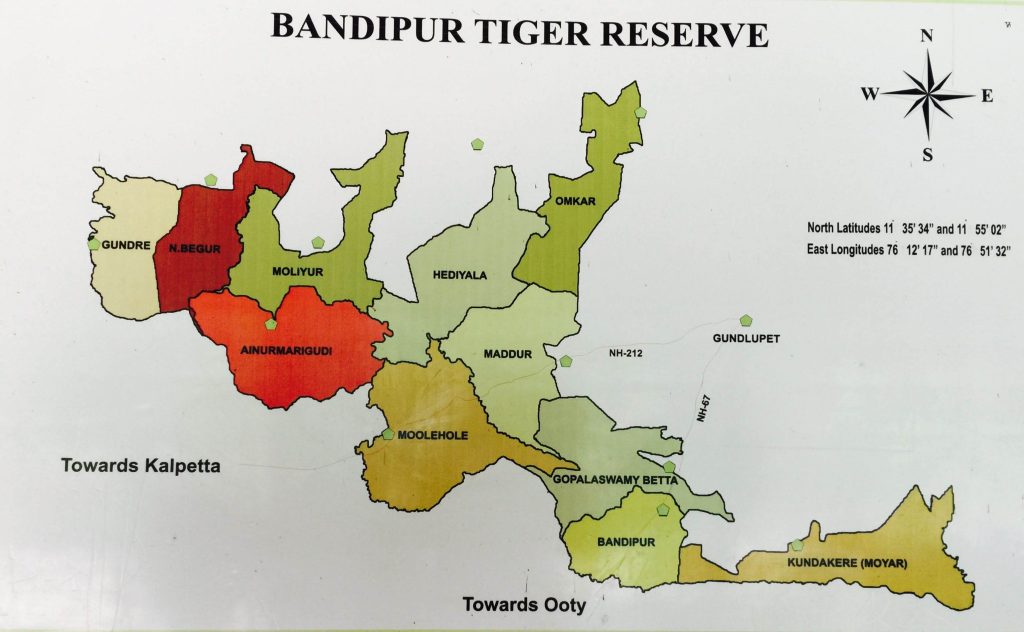

This reserve is South India’s largest protected area and home to the world’s largest population of wild elephants.
Later Bandipur National Park joined its hands with its other neighbouring parks, the Nagarhole National Park (643 sq km), Mudumalai National Park (320 sq km) and Wayanad Wildlife Sanctuary (344 sq km) together to form the essential part of Nilgiri Biosphere Reserve making the area as the largest wildlife protected zone.
Flora and fauna
Bandipur, located at the slopes of the Nilgiris and once the exclusive hunting grounds of the erstwhile Maharajas, has a long history with tigers. It is one of the remaining refuges for the endangered Asiatic wild elephant and is one of the thirty reserves established across the country to safeguard the tiger and its habitat.
Apart from the two famous inhabitants, this national park is home to a number of endangered animals such as sloth bears and four-horned antelopes. Sambar, mouse deer, chital, sloth bear, and the uncommon flying lizard may all be found in Bandipur. Its appeal is enhanced by the presence of over 200 bird species and diverse vegetation. Teak, rosewood, sandalwood, Indian-laurel, and Indian Kino trees are among the timber species found in Bandipur.
Geographical Orientation
Entry Fees: The Bandipur National Park charges Rs 250 as the entry fee. The charges for safari differ with the mode of transport. There are buses and gypsies available for safari. The gypsy rides, which can accommodate 6 people at a time, cost Rs 3,000, while the bus rides cost Rs 350 per person. Bandipur National Park also offers elephant rides through the park for tourists, at Rs 50 per head.
Best time to visit: Bandipur Safari is worth it when planned according to India’s climatic conditions and the best season.
The winter season starts from October – March, considered as the best time for Bandipur Safari. During this season, one can have access to the variety of flora and fauna where wild animals can add to the beauty of nature.
The Monsoon season, i.e., between July to September, looks more enchanting due to good rain and gives tourists a comfortable environment to surf the dense jungles.
The Summer season is excellent for spotting tigers due to warm weather conditions during the day time. If you can bear the warmth, then this is the best time to visit the park.
How to Reach
By Road: There are good options if you opt for road transport, i.e., government buses, private buses, and cabs, which run through all major cities of Karnataka and Tamil Nadu.
By Airways: Bangalore International Airport is the nearest airport, 255 km. The nearest domestic airport is Coimbatore Airport is 84 km.
By Rail: Mysore railway station, i.e., 80 km away from the city.
Different Areas In The Park
The park is situated where the Deccan plateau and the Western Ghats meet. The park’s elevation varies from 680 to 1,454 metres.
East– The scrub jungle and major forest areas make up this region. There are both dry and moist deciduous trees in the park’s forest area. Many flowering plants can be found in the park’s shrublands. The best spot for bird watching. It’s easier to spot carnivorous animals here.
The Nugu River, which is famous for spotting animals, is located in the central region. This region contains the HimavadGopalaswamy Betta summit. This is the park’s highest vantage point. This peak is well-known among hikers and pilgrims. People climb to the top to get a bird’s-eye view of the park. On the summit, there is a Hindu temple. Sandalwood trees can be found in this area. Due to the abundance of watering holes near the hill, elephants are common.
North West – The Kabini Reservoir is the most famous feature of this region.
It is the park’s main source of water. During the summer, this is the best place to look for animals. Dry deciduous forest and tropical forest dominate the forest region in this area. During the monsoon season, the area will be lush.
This area is bordered on the south by the Moyar River. This is the best place to see a variety of animals. This area is home to deer, elephants, bison, squirrels, jungle cats, and other animals.
North – This area includes Kabini’s river and backwaters. There are two streams in this area as well. Boating and birdwatching are popular activities in this area. Birds can be seen in large groups when the river dries up in the summer. You can also see a lot of fish. In this area, bicycle tours are available.
Conflicts and threats
The National Highways NH-181 and NH-766 pass through Bandipur national park. This road has been a major concern as speeding vehicles have killed many wild animals in spite of frequent warnings to travellers from the forest department officials and restriction on movement of vehicles in some stretches between 6 p.m to 6 a.m. This has raised fears of extinction of habitat of wild animals exclusively found in this national park.
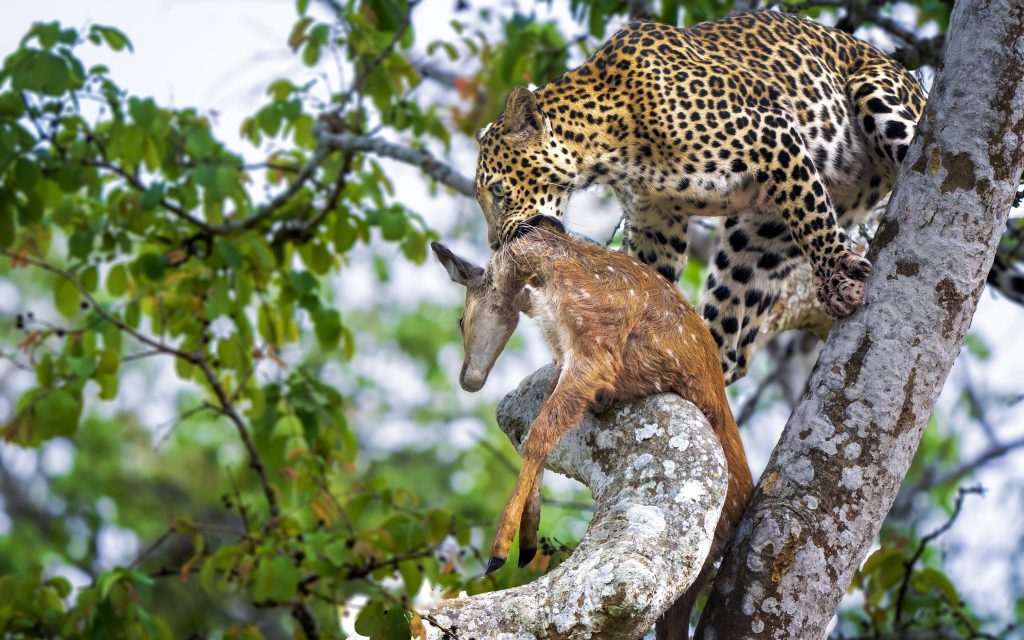

On October 9, 2018 the National Park lost one of its prized possession, a tusker named ‘Rowdy Ranga’ was hit by a bus in the night after which the government of Tamil Nadu and Karnataka agreed to ban night traffic in the forest. However, Kerala condemns the ‘Night Ban’ and has asked for the ban to be lifted to save a reroute that increases the distance by 45 km.
Places near National Park:
Biligirirangan Hills: Also known as BR Hills, Biligirirangan is a hill range that forms the south-eastern border of Karnataka. The place is known for Biligiri Ranganatha Swamy Temple Wildlife Sanctuary or simply BRT Wildlife Sanctuary that is said to be situated on the confluence of the Western Ghats and the Eastern Ghats. Thus it is evident that the sanctuary is home to a unique ecosystem. The BR hills links the Eastern Ghats and the Western Ghats, which eventually allows animals to move between the two ghats and even facilitates the gene flow between populations of species in these areas. Thus, this sanctuary can be reckoned to serve as an important biological bridge for the biota of the entire Deccan plateau.
Another highlight of the place is Biligiri Rangaswamy temple, which is situated at the edge of a bare cliff overlooking the northern parts of the sanctuary. It is the only temple in India, where the only standing form of God Ranganatha can be witnessed. Other deities in the temple include Ranganayaki and Alvars. An annual car festival is held in the month of April here when a large number of people are seen thronging the temple. Every two years, the local Soliga tribe present a large pair of slippers measuring 1-foot and 9 inches to the presiding deity Ranganatha.
Gopalaswamy Betta
Tucked away in the enormous Bandipur National Park, Gopalaswamy Betta is a majestic hill with a peak 1450 metres above sea level. The forest-clad hill is not only known for being the highest peak in the park, but for the mist that engulfs it for most of the year, giving it the name Himavad Gopalaswamy Betta, as ‘Himavad’ translates to ‘fog’ in the local language. Apart from the elephant rides here, which the spot is most popular for, another attraction that tourists flock to is the Gopalaswamy Temple, situated atop the hill.
The temple pays tribute to one of the incarnations of Lord Krishna and is a preferred spot for solitude, especially at sunrise and sunset when the view beyond the temple soothes your soul. A place of worship amidst natural beauty is a testimony to the fact that Bandipur is more than just a scenic place.
Nilgiri Biosphere
Recognized as a UNESCO World Heritage Site in 2012, Nilgiri Biosphere Reserve encircles Karnataka, Tamil Nadu, and Kerala’s various national parks and extends across a massive area of 5,520 sq. km. A trek through the reserve opens doors to splendid sights like the wildlife, the dense trees, and the incredible Western Ghats.
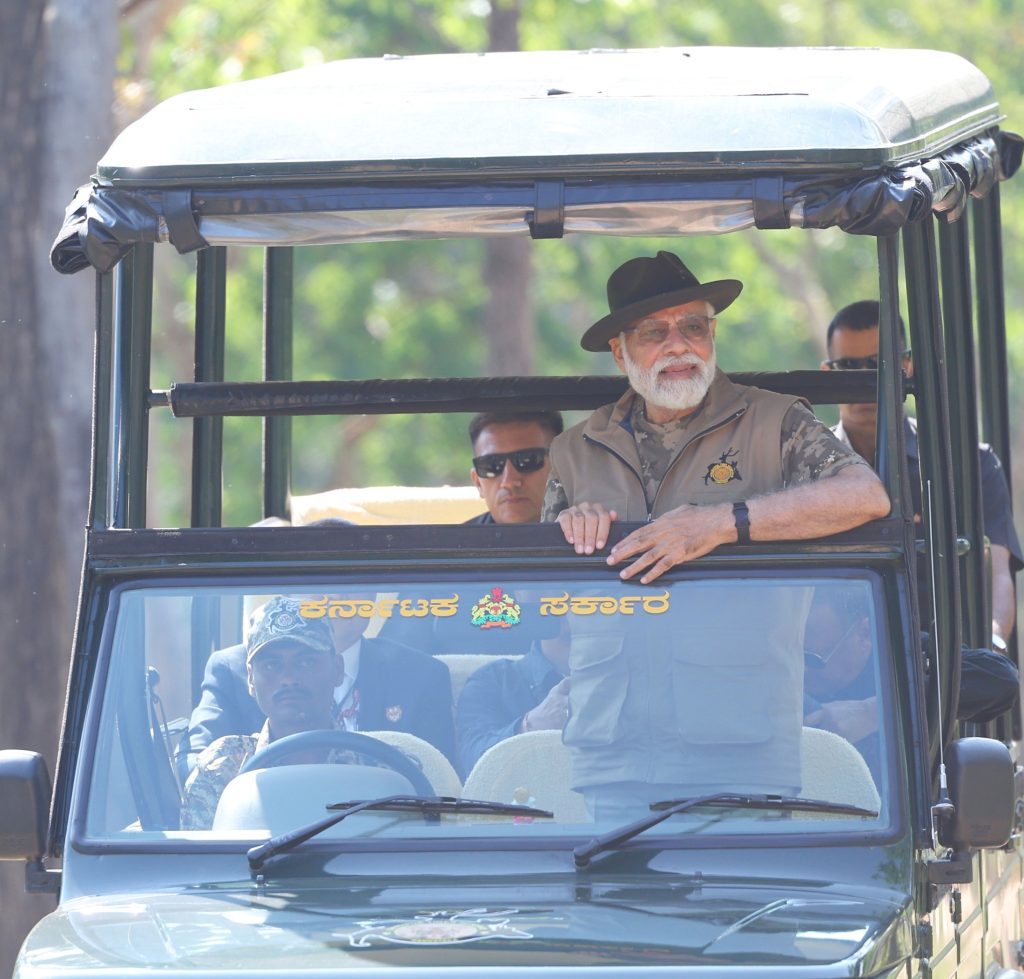

The reserve boasts of elephants and tigers, primarily, since it is dedicated to the conservation of these species, but apart from that you’re sure to spot unique animals like gaurs, Indian Leopards, lion-tailed macaques, and even the Malabar giant squirrel, which is a rare sight. Prepare to set your eyes on some breathtaking beauty amidst vivid flowers, exotic plants.
Where to stay:
Bandipur Wildlife Resort : starting price @1880/
To connect with nature in green surroundings is almost an impossible dream for those living in cities bustling with busy schedules and work, So Bandipur Wildlife Resort brings you one of the best resorts in Bandipur, built with an aim to give you a relief from the city life & is packed with luxury facilities to make your stay perfect. This place is best suitable for a short vacation, birthday celebrations, parties, honeymoon, family trips, conferences, meetings, team outings and formal engagements
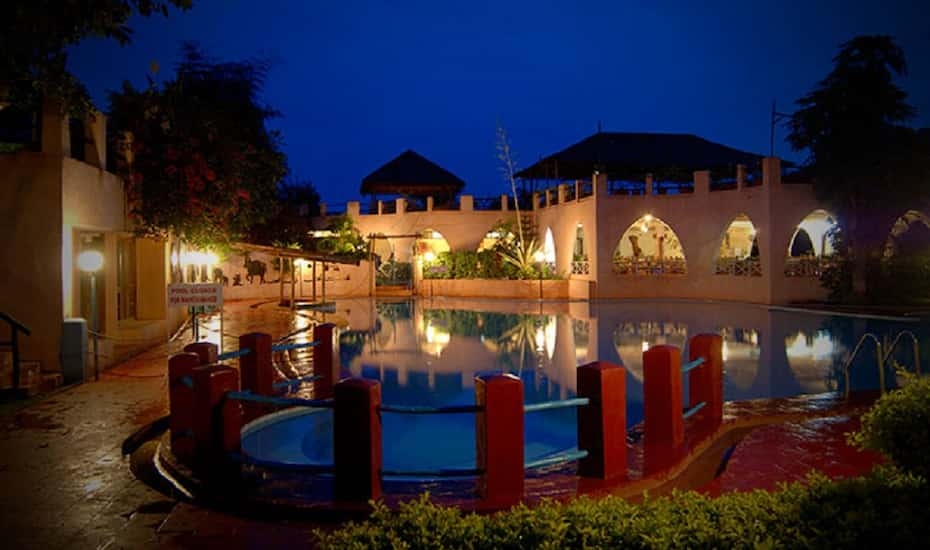

Windflower Jungle Resorts & Spa Bandipur: starting price @ Rs 5,990.
Stay amid the soothing sound of nature and absorb the freshness of the lush surroundings in this tranquil retreat.
No tigers on a tiger safari
The director of a tiger reserve in India has defended his staff after a visit by Prime Minister Narendra Modi failed to spot any big cat. The PM had travelled to Mysuru city at the weekend to take part in a commemorative event to mark 50 years of Project Tiger and – in theory – draw attention to the increasing population of tigers as shown by the latest five-yearly survey.
According to these figures the number of tigers in the wild grew from 2,967 in 2018 to 3,167 by the end of last year.
Yet, Modi saw nothing more than paw prints during his two-hour safari in the Bandipur Tiger Reserve in Karnataka on April 9, say media reports.


And images widely circulated on social media purported to show that the registration of the 29-year-old driver Madhusudhan’s vehicle had been cancelled in the wake of the criticism. This was denied by the reserve’s director.
During Modi’s two-hour drive inside the core area of the Bandipur reserve – which is spread over an area of 912 sq km – he saw large herds of elephants, a number of gaurs (Indian bison), spotted deer and sambar, a deer native to the Indian subcontinent.
Senior forest officials from the Bandipur Tiger Reserve stood up for Madhusudhan and said “he did his job”. They claimed he “took the route which was finalised” by the PM’s security staff beforehand.
The reserve’s director Ramesh Kumar was quoted as saying that “in the name of high security, vehicles repeatedly went on the selected route, hampering the sightings”.

